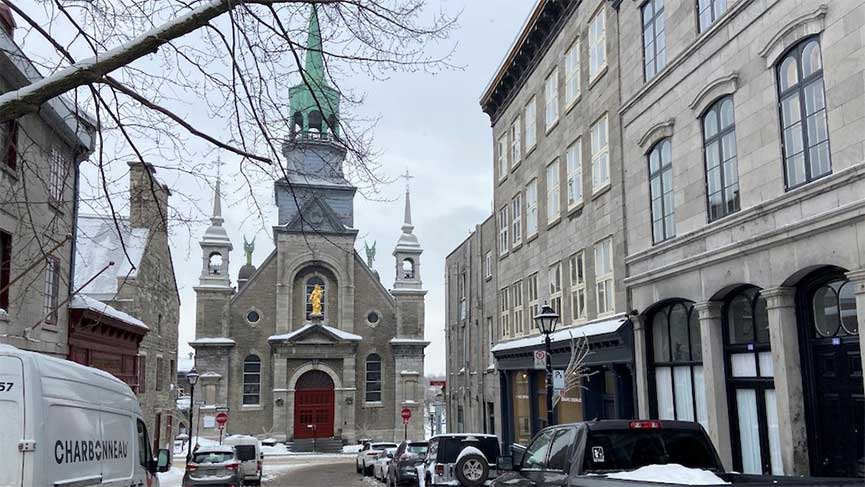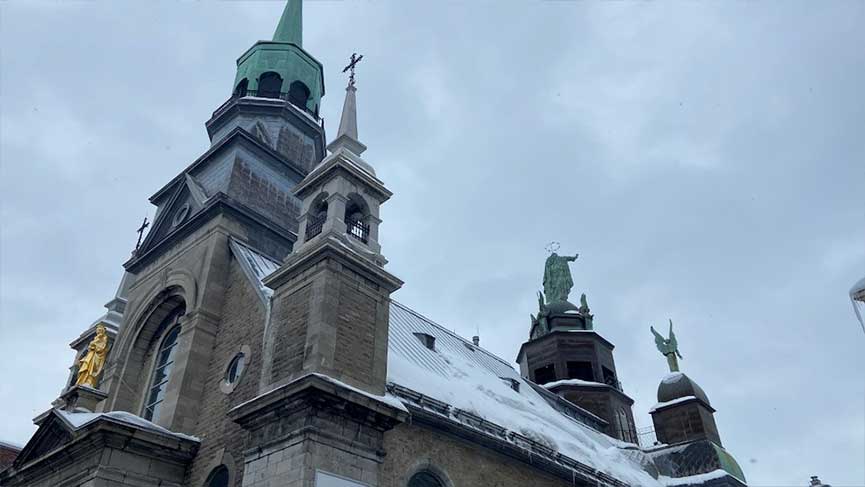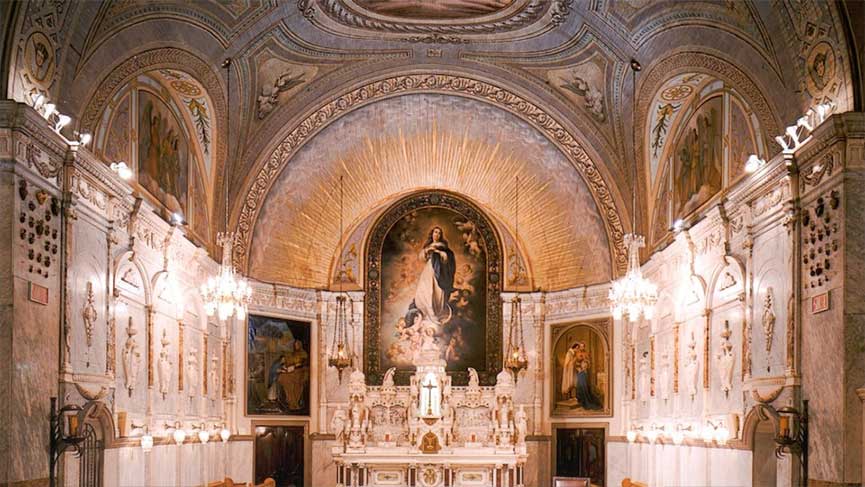Scanning Notre-Dame-de-Bonsecours Chapel for its 250th Anniversary

Montreal
Original French text by Philippe-Antoine Saulnier (Translated by the Archdiocese of Montreal)
This year, the chapel in Old Montreal that was founded by Marguerite Bourgeoys will celebrate its 250th anniversary. It was inaugurated on June 30, 1773, and was the first chapel in Montreal to be built in stone.
But beneath the wooden floors of the building, the remains of the original place of worship erected in 1655 still show what 17th century construction looked like. That first chapel was destroyed by fire in 1754.
Do you see the charred wooden planks? That was the forecourt of the chapel, as general director of the Marguerite Bourgeoys Historical Site Jean-François Royal points out. This was the entrance to the chapel.
To ensure the monument’s survival for centuries to come, a scanning operation is currently under way to digitize its finest details.
A life devoted to education
Saint Marguerite Bourgeoys, canonized by John Paul II, was born in Troyes, Champagne, in 1620. In 1653 she arrived in Montreal, wilth the intention of educating the inhabitants of the new colony.

Her vision was to build a community to educate people, to educate women. She wanted to teach her girls how to be financially independent, Mr. Royal explains. Marguerite was really driven not to be dependent on any man and to be a financially autonomous actor for her community.
With her bold vision and her sense of the community, she was able to persuade the handful of dozens of inhabitants who at that time made up the population of Montreal to construct a chapel dedicated to the Virgin Mary outside the city on a natural promontory along the river.
Evidence of the construction of that first chapel can be seen today in the basement of the building, thanks to the archeological excavation efforts carried out in the 1990s. Holes dug out and pieces of wood from that era bear witness to the work that went into building the chapel.
An eclectic decorative style
One floor up, the chapel today no longer looks the way it did at the time of its original construction. The elements that are visible to the visitor have almost all been replaced, refinished or altered. Over the centuries, those in charge attempted to keep the decorative aspects in keeping with the tastes of the day… for better or worse.
We must understand, points out historian Stéphan Martel, director of research for the Marguerite Bourgeoys Historical Site, that the chapel was somewhat old-fashioned-looking by the end of the nineteenth century. The huge worksite for renovation and restoration that was initiated at that point allowed for the construction of a new façade in the Neo-Roman style that we see today. On the inside, a new vaulted ceiling was put in place, which was painted in fresco by then-celebrated religious fresco painter François-Édouard Meloche.
A few decades later, that style of decoration was already outmoded. Early twentieth-century tastes found the chapel gloomy, says Stéphan Martel; artworks that darkened the atmosphere were concealed. And so, the trompe-l’oeil frescoed ceilings were replaced with canvas, and the walls were covered with marble panels. The visual outcome is a myriad of decorative styles reflecting different eras.
Since 2005, the chapel has been the resting place of Marguerite Bourgeoys.
Documenting the chapel in minute detail
Despite its diminutive size, Notre-Dame-de-Bonsecours Chapel has an important place in the minds of Montrealers. Whether as a pilgrimage site, a church for English-speaking Catholics or a chapel for sailors at prayer, it is immortalized in Leonard Cohen’s song “Suzanne,” – And the sun pours down like honey on our lady of the harbour.

But what happens if there is ever another fire like that of 1754?
Because of the fire in Notre-Dame-de-Paris, we realized that the exact reconstruction of this chapel would not be possible, with the information and the documentation that we have presently, explains Jean-François Royal.
Three-dimensional scanning has already been started by a specialized company hired to carry out that procedure, permitting documentation right down to the millimetre of every element of the historic building. It is a gift (to the chapel), explains the director. He is thinking of using the information thus obtained to put together some projects using augmented reality applications.
I would like people to be able to sit down in the pews of the chapel, put on a virtual reality headset and visualize the invisible, the wood framework that the public cannot otherwise see, but which is incredibly beautiful.
In the mean time, conferences and concerts and various other events are being planned to celebrate the 250th anniversary of this historic monument.

Comment
Comment
Add new comment